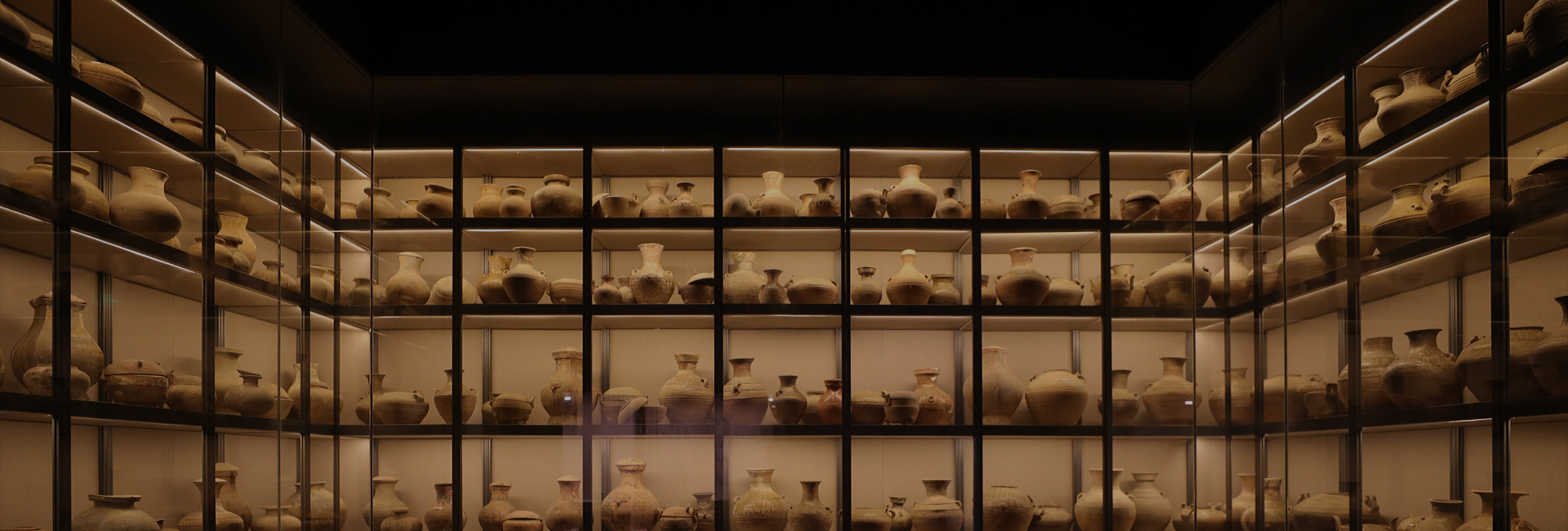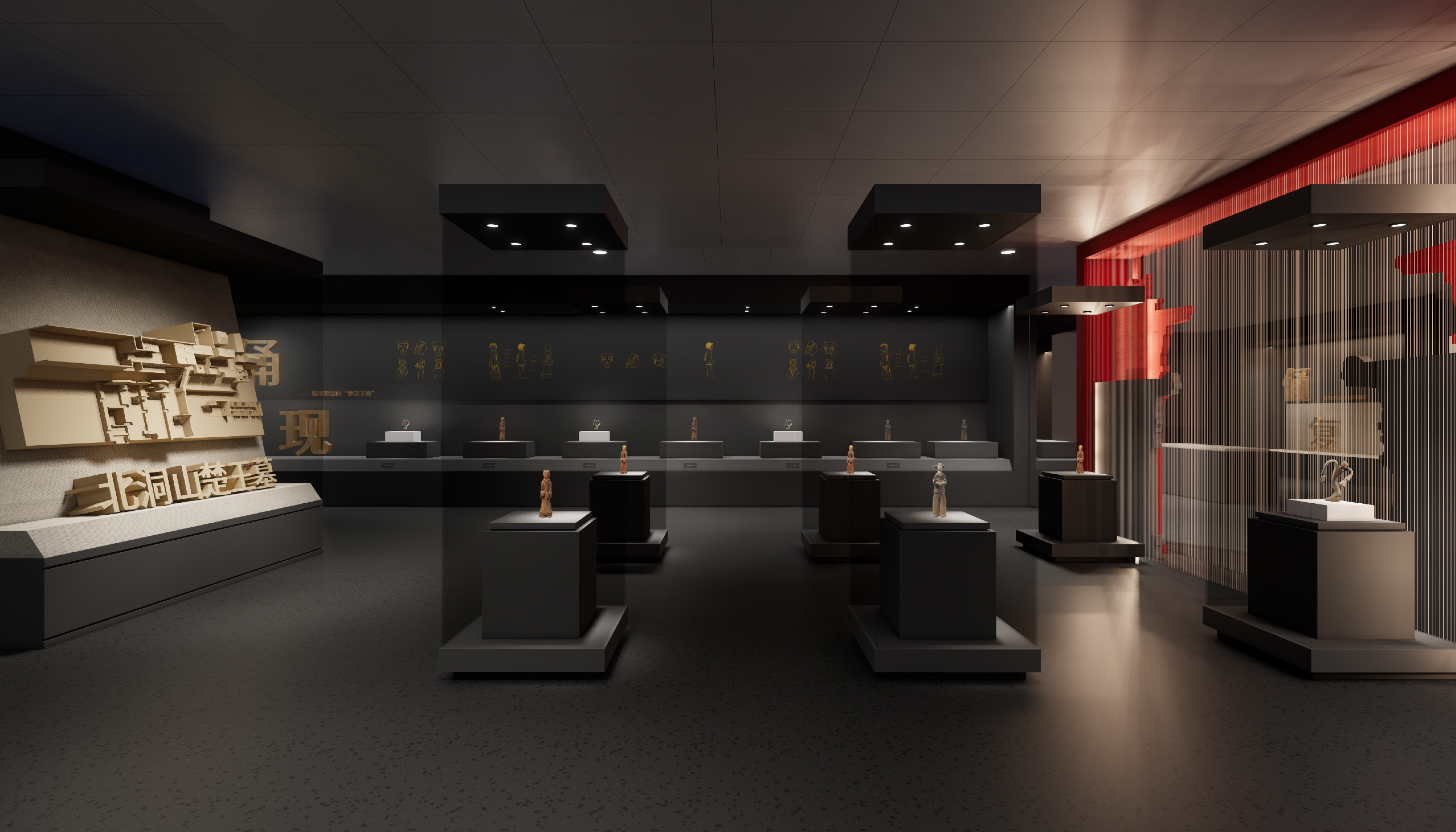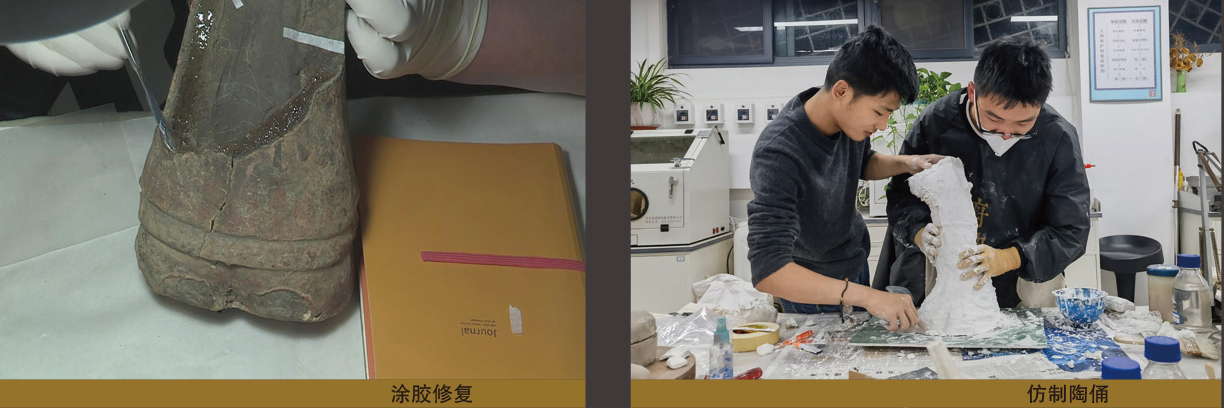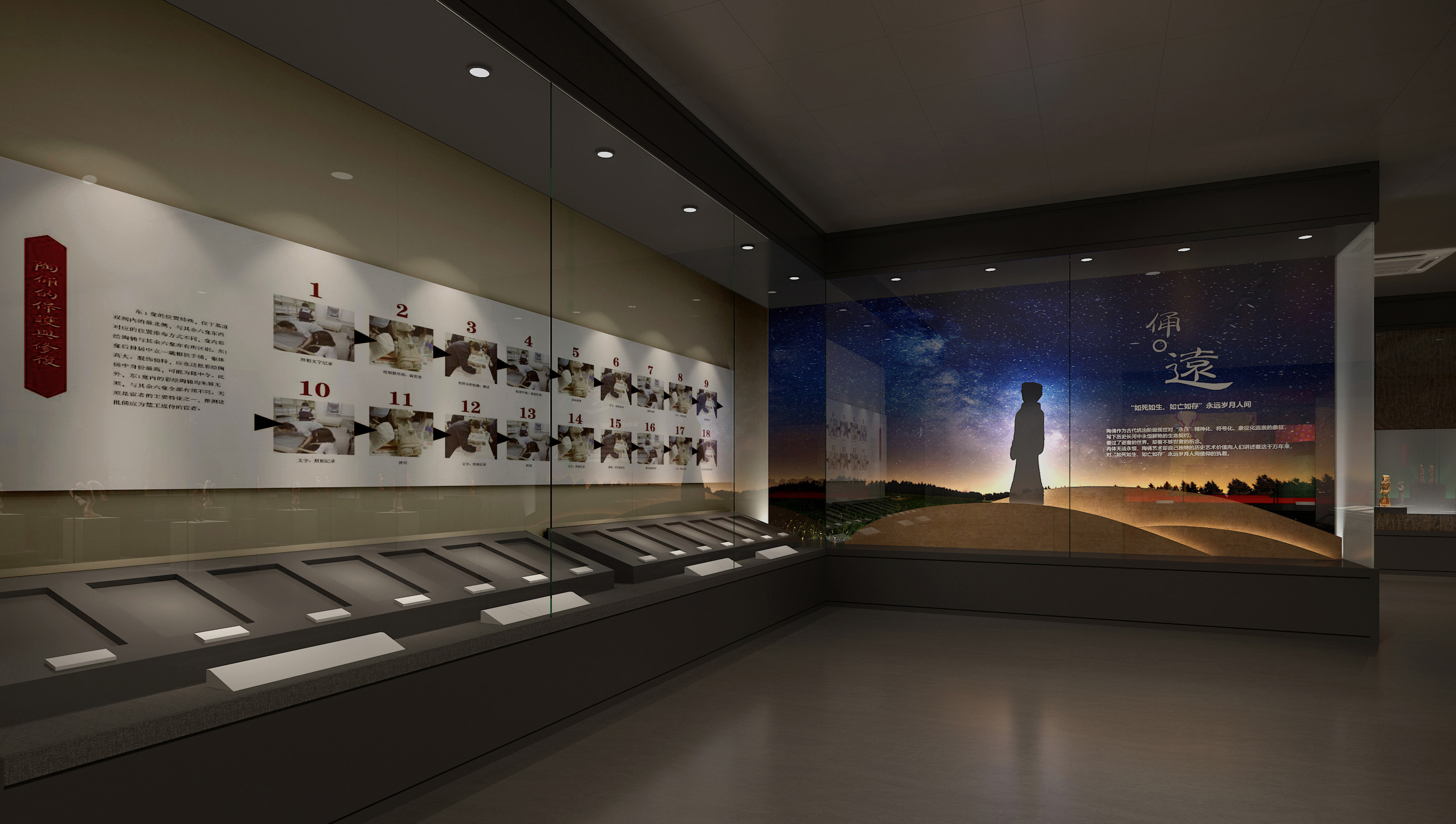

Xuzhou Han Culture Academic
Submit
【XU BO】Maximum daily capacity: 10,000 person-times Instantaneous capacity: 2,500 person-times

◇ Exhibition time:2023年1月19日——2023年4月18日
◇ Exhibition venue:Deng Yongqing Collection Calligraphy and Painting Museum on the first floor of Xuzhou Museum

2022 "Jiangsu Provincial Museum Boutique Exhibition" project
Han Style and Splendor -- Exhibition of Painted Pottery figurines Unearthed from the Tomb of the King of Chu in Beidongshan, Xuzhou
Sponsor
Xuzhou Municipal Bureau of Culture, Radio, Television and Tourism
Organizer
Xuzhou Museum (Xuzhou Institute of Cultural Relics and Archaeology, Xuzhou Museum of Han Dynasty Stone Carvings)
Co-organizing unit
Xuzhou Imperial edict Museum
Support unit
Xuzhou Shengzhan Culture Communication Co., Ltd
Xuzhou Wuzhu Culture Media Co., Ltd
Opening time
10:00 a.m., January 19, 2023
Exhibition location
Deng Yongqing Collection Calligraphy and Painting Museum on the first floor of Xuzhou Museum
Exhibition time
January 19, 2023 - April 18, 2023

Antecedent
The tomb cluster of King Han and Chu in Xuzhou is one of the hundred major archaeological discoveries in China in the 20th century, and the tomb of King Chu in Beidong Mountain is an important part of it. The tomb of King Chu in Beidong Mountain is a large horizontal cave cliff tomb with unique shape and complex structure, which reflects the superb craftsmanship of Han Dynasty architecture. A large number of precious cultural relics have been unearthed, among which the terra-cotta figures are the most wonderful part, and also one of the most beautiful name cards of the Han Dynasty material cultural relics in Xuzhou.
The terra-cotta figures buried in the tomb of the King of Chu in Beidong Mountain include the terra-cotta figures of guards and guards, musicians and dancers, servants and other types. These terra-cotta figures have bright colors and vivid and elegant strokes, with distinct marks of The Times and regional characteristics, reflecting all aspects of the court life of the king of Chu at that time. They are important carriers of social style, aesthetic form and even ideology at that time, and important material materials for studying the history of the Han Dynasty.

【Terra-cotta figures】——To live as if they were dead“Underground kingdom”
The terra-cotta figures, or puppet figures, are funerary instruments in ancient funerary rites and customs. It is generally believed that the generation of terra-cotta warriors is related to the phenomenon of "human martyrs" prevailing in Xia and Shang Dynasties. After the Western Zhou Dynasty, the phenomenon of human martyrs decreased and gradually replaced by figurines.
The terra-cotta warriors experienced a development process of about 2000 years from Zhou Dynasty to Ming Dynasty, and the Qin and Han dynasties were the peak period of burial with terra-cotta warriors. Compared with the massive army of terracotta warriors and horses of the Qin Dynasty, the pottery terracotta warriors of the Han Dynasty were more artistic. The proportion of terracotta warriors was reduced to one third of that of real people, and the style and subject matter were more romantic, pleasant and life-like.
Xuzhou, as an important seat of enthronment during the Han Dynasty, has unearthed more than 6,000 terracotta figures of the Han Dynasty, the largest number of terracotta figures found in the Han Dynasty except the capital Chang 'an. There are magnificent terracotta army formations, solemn and respectful garrison guards, musical and dance ranks, graceful female officials and attendants, as well as slaves and menial servitude driven by the owner of the tomb, and livestock and poultry reflecting the life of the powerful manor. These figurines have distinct characteristics of The Times, rich in types, shapes and styles.

[Terracotta figurines present] -- The "kingship of Chu and Han"
In May 1954, the villagers of Dongshan Village, Maocun Town, northern Xuzhou City accidentally stepped on the stolen hole at the top of the western chamber of the main tomb while herding cattle, and took out the bronze seal of "Secretary of the Chu Palace", "Left Lieutenant of the Rainbow", four baht and half liang of money, pottery figurines, jade and other burial objects. In 1978, the villagers found the attached tomb when they were farming, and took out a batch of burial implements including the "Xiangben Chengyin" and the "domestic slave yard worker" pottery figurines. These two accidental discoveries made the tomb of the King of Chu in Beidongshan, which has been covered with dust for more than 2000 years, available to the world. According to the shape of the tomb, the age style of the unearthed relics, and the comparison of the large Western Han Dynasty tombs that have been found in Xuzhou, it is estimated that the owner of the tomb should be a certain generation of Chu king in the early Western Han Dynasty.
The painted pottery figurines unearthed from the tomb of the King of Chu in Beidongshan involve various aspects, from protecting the security of the court of the King of Chu to living, eating and enjoying the life of the King of Chu, with distinct levels and different levels of honor and inferiority. There are music and dance figurines that appear together with bronze chimes, stone chimes, and pottery, symbolizing places of life and entertainment; The niches on both sides of the tomb path symbolize a large number of terracotta figures guarding the tomb owner; There are also figurines in the tomb. The owner of the tomb is dressed in jade. From the scale of the tomb to the pottery figurines and other funerary objects, all of them show the noble identity of the tomb owner, vividly reproduce many scenes of the court life of the Chu State in the Western Han Dynasty, and reflect the psychological desire of the royal aristocracy of the Han Dynasty to live for a long time, to sing and dance for peace, and to enjoy unlimited pleasure
。

[Terracotta figures and rhyme] -- "colorful charm" surrounded by green pearls
The pottery figurines unearthed in the tomb of the King of Chu in Beidongshan and in the small niche of the tomb path are only survivors of theft, but their number and types are far more than those of the same kind of tombs that have been excavated. Some of the pottery figurines' costumes are more advanced among the Chu costumes, reflecting the appearance of the costumes of the upper class of the Chu State. In particular, the painted terracotta figures in the niches, the eyebrows and whiskers in different forms, the colorful costumes, the different scabbard patterns and jade swords, the arrows with rich patterns, the different bands, the colors of the ribbons and the forms of the ties, etc., all exceed the data of the silk paintings, murals, wooden figurines and costumes found in the past, greatly enriching the relevant data of the early Western Han Dynasty.
The painted terracotta figures in the tomb niche of the King of Chu in Beidongshan are an orderly group combination, presenting a shocking scene. The costumes of the figurines are rich and harmonious in color, with smooth and elegant lines. The facial expression is vivid and detailed, the eyebrows, eyes and whiskers are as thin as a hair, and the forms are diverse, and even the single and double eyelids are clear and identifiable, integrating sculpture and painting skills. The distinctive personality features depict the personality characteristics of thousands of people.

[Terracotta figurines · recovery] -- Regeneration of the unearthed painted pottery figurines




repair process

Conclusion [Terracotta figures · far]
In ancient times, pottery figurines were the symbol of "eternal" spiritual, symbolic and symbolic worship, and wrote the eternal and bright life contract in the long history.
I have seen the world of the dead, but I can't see the prayers of the dead.
The body cannot be eternal, but the terracotta figurines tell in a unique way about the human obsession of "like death, like life, like death, like survival" for thousands of years.

Producer: Li Xiaojun
Exhibition Director: Zong Shizhen
Curator: Yue Kai, Zhao Xiaowei
Content design: Zhao Chengcheng
Exhibition design: Yu Ming
Collection selection: Wu Geng
Cultural relics protection: Wang Junyan, Lv Haoran
Social education: Du Yihua
Publicity and promotion/cultural and creative research and development: Du Bin, Liu Yang, Ye Chaoran
Cultural relics transportation: Qi Shipeng